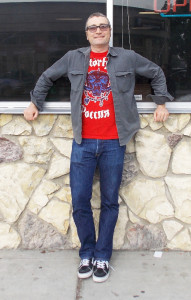 We’re stoked to announce the official publication of
We’re stoked to announce the official publication of
the second volume in our Scene History series, Cory M. Linstrum’s The Rock & Roll of San Francisco’s East Bay, 1950-1980. Before the Lookout Records revolution put the Bay Area on the map for current generations, the East Bay was home to a thriving, influential, and diverse rock and punk scene. This little zine packs a whole lot of fascinating history for anyone curious about the roots of the music they’ve always loved, or about SF area history generally. It comes out March 15th, and Cory answered some questions for us over email.
1. Why did you write the Rock & Roll of SF’s East Bay scene history?
It was originally inspired by Joel Selvin’s book, San Francisco: The Musical History Tour. For anyone that hasn’t seen this, it’s like a tourist guidebook of locations specific to Bay Area rock ‘n’ roll: i.e. the sites of now-shuttered infamous nightclubs, historically significant recording studios, sites of a drug busts involving famous musicians, etc. Despite Selvin’s target audience being baby-boomers, it goes much deeper than your average Dead/Airplane/Quicksilver trivia. It’s not only San Francisco locations, either. It includes spots here in the East Bay: the house Metallica lived in before becoming world-famous, CCR’s “Cosmo’s Factory” rehearsal space, the vacant lot (now baseball field) that had a house Jimi Hendrix once lived in as a boy.
It’s a fun book that I always thought would be rad if someone did an all-punk rock version of, in a sloppy fanzine format. I considered it myself, but, instead of the subject of significant locations, I settled on writing about my favorite local bands of multiple genres, operating in multiple decades, and the local record labels that released their music.
 The Rock & Roll of SF’s East Bay was actually written in entirety before I learned of Microcosm’s scene history series. It began as a series of essays, one for each decade: 50s/60s/70s, that I intended to self-publish one segment at a time, in issues of the fanzine I edit, Savage Damage Digest. However, I ran out of space before I could even fit in the first installment. Then I got hip to Microcosm’s open call for submissions, which was exactly what I needed!
The Rock & Roll of SF’s East Bay was actually written in entirety before I learned of Microcosm’s scene history series. It began as a series of essays, one for each decade: 50s/60s/70s, that I intended to self-publish one segment at a time, in issues of the fanzine I edit, Savage Damage Digest. However, I ran out of space before I could even fit in the first installment. Then I got hip to Microcosm’s open call for submissions, which was exactly what I needed!
2. What’s the most amazing/compelling/strange thing you learned while researching and writing it? What’s your favorite band or album from that era?
One of the coolest things was learning the street addresses and approximate locations of some of these extinct recording studios and nightclubs. In hadn’t realized their proximity and closeness to places I casually pass by in my everyday routine. It’s pretty neat going down Alcatraz Avenue, along the Berkeley/Oakland border, knowing that such and such record was recorded in a specific building. Or passing through the intersection of Milvia Street and San Pablo Avenue, visualizing that our Good Vibrations location was once the original Longbranch Saloon! Of course this is expected in places like Los Angeles or New York City, cities known as entertainment hubs, but it’s pretty cool for little ol’ Berkeley.
Since the advance and mail order copies of my Rock & Roll of SF’s East Bay have been circulating I’ve had some pleasant surprises: an invitation extended to me by a well-respected music historian and producer, to come by and peruse his archives and hear unreleased material by some of the bands I’ve written about. I was also thrilled to learn various members of the Jars, a Berkeley new-wave/punk group written about in the chapter on the 70s, had each been given copies to read—and enjoyed it. The band’s original vocalist, J.D. Buhl (who isn’t actually on either of the Jars records), contacted me. He made me aware of an entire alternate pre-history of this band. Now I’m privy to information I found nothing on during my research. It was a great surprise. We’ve since sat down together for an interview and I’ve heard the bands earliest, unreleased demos—which sound like an amazing merger of the Archies and the New York Dolls!
Besides these punky-poppy, practically unheard, early Jars recordings, I’d have to say my favorite Berkeley punk record is “Back To Bataan”, the 1979 single by the Maids. It’s probably the gnarliest sounding record to come out of the East Bay’s original punk wave of the late seventies. Anyone listening to the Killed By Death bootleg record series knows this one. Curiously, as the Maids only made two live appearances during its brief lifetime, most of the local musicians active on this late-seventies circuit don’t remember them.
3. Tell us more about you! What do you write / do / play / think about most?
It’s always been about music, music, music. I listen to it non-stop, write about it, play it live, talk about it and dream about it—always have. I was the kid in 7th grade with a Hit Parader, Creem or Circus Magazine behind his history book. The first underground fanzine I discovered, back in ’83-’84, was Metal Rendezvous. Soon after that I discovered punk rock and a whole new world of fanzines opened up for me. I did various fanzines of my own in high school, then none for many years—I just read ‘em and took mental notes.
I started writing and publishing again in 2010 with Savage Damage Digest. Its release schedule is inconsistent. With my “whenever-I-feel-like-it” attitude, I’m only four issues deep. Still, I keep busy. I just came off a ripping project that I’m really proud of: The Subtractions, a band from California’s Central Valley that existed ‘79/’80. I tracked them down and began interviewing its members for a story with Savage Damage Digest. In the process I discovered a set of tapes the band had recorded in 1980. I got ahold of them, listened to them, was blown away, restored them, transferred them, found a record deal and had an overall great time curating them for release with HoZac Records’ Archival Series (needless to say the band was thrilled and has since done a successful reunion show).
Of course I’m also an avid reader and fan of film, as well as into skateboarding and electric guitars. My wife and I love to travel. We never hesitate to drag our kids onto an airplane or load them into the back seat of our car. I’ve also done bands off and on for the last 25 or so years. I’m currently doing one, but wouldn’t hesitate to bail out when the dive bars and personality clashes become an agonizing grind (call me non-dedicated).
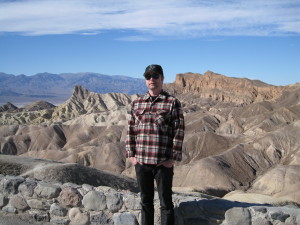 4. What’s your next project that you’re most excited about?
4. What’s your next project that you’re most excited about?
At the moment I’ve got a story coming out in Ugly Things #41. It’s a short piece on 6IX, a mostly unknown band that released one Sly Stone-produced single in 1970. Following that is an interview with Boston punk band Unnatural Axe for the next issue of Human Being Lawnmower. I’m hoping to see both of these on the printed page very, very soon. Currently I’m wrapping an interview with (the previously mentioned) J.D. Buhl. He’s done a handful of cool releases, but his 1981 single, “Do Ya Blame Me,” is an awesome side of local poppy-new wave-punk. Sitting down and interviewing him was great fun and he opened a lot of doors for me regarding various local bands I’d only heard of, as they’d never released anything. This gave me some great reference points on these groups. My long term goal is to keep interviewing local musicians and writing about Bay Area punk rock.
Check out our Scene History series zines + call for submissions here, and Cory’s new zine here!
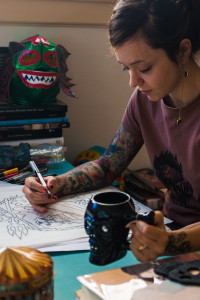 For the longest time, Vegan Italian Tattoo was the working title of Cecilia Granata’s gorgeously illustrated cookbook of Italian classics made vegan. The final name of the book, Mama Tried: Traditional Italian Classics for the Screwed, Crude, Vegan, and Tattooed was a team effort, the rare collaborative title that really works. The end result is a spirited, fun cookbook that teaches you to cook real Italian food, cruelty-free. The book comes out officially in April, and the author took a break from her other work—including painting and tattooing—and answered some questions for the occasion:
For the longest time, Vegan Italian Tattoo was the working title of Cecilia Granata’s gorgeously illustrated cookbook of Italian classics made vegan. The final name of the book, Mama Tried: Traditional Italian Classics for the Screwed, Crude, Vegan, and Tattooed was a team effort, the rare collaborative title that really works. The end result is a spirited, fun cookbook that teaches you to cook real Italian food, cruelty-free. The book comes out officially in April, and the author took a break from her other work—including painting and tattooing—and answered some questions for the occasion: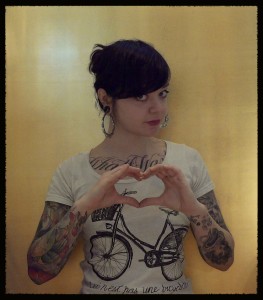 2. Do you have a favorite recipe in the book? What do you most like to cook for special occasions? What do you eat when you’re tired and don’t have a lot of energy to make a fancy meal?
2. Do you have a favorite recipe in the book? What do you most like to cook for special occasions? What do you eat when you’re tired and don’t have a lot of energy to make a fancy meal?  3. Do you have a favorite tattoo or type of tattoo that you do?
3. Do you have a favorite tattoo or type of tattoo that you do? On a rainy day in the year 2000 I received a phone call from a man desperately trying to convince me to let him come visit Microcosm’s warehouse. Microcosm’s warehouse at the time was a 12×6’ room in the basement of my home and doubled as my office. A little nervous, I agreed but made him wait in my living room while I grabbed everything. It would be difficult for both of us to fit in the Microcosm room without first removing my desk. Tom bought over 90% of the zines and books that I had in stock. He also asked about many things that I was sold out of. I had to literally reorder everything that week.
On a rainy day in the year 2000 I received a phone call from a man desperately trying to convince me to let him come visit Microcosm’s warehouse. Microcosm’s warehouse at the time was a 12×6’ room in the basement of my home and doubled as my office. A little nervous, I agreed but made him wait in my living room while I grabbed everything. It would be difficult for both of us to fit in the Microcosm room without first removing my desk. Tom bought over 90% of the zines and books that I had in stock. He also asked about many things that I was sold out of. I had to literally reorder everything that week. 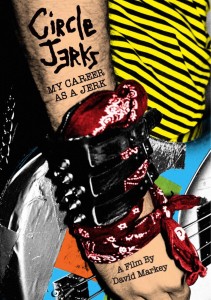
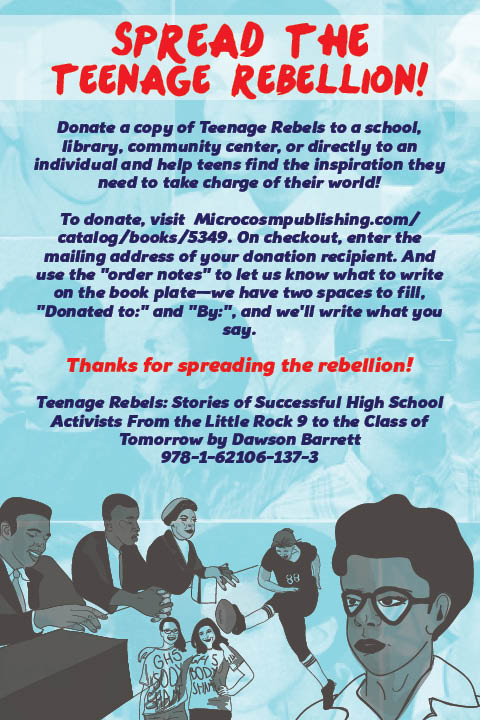
 It’s estimated that last year adult coloring books added $50M to publishing industry sales, creating a record sales year. But Microcosm sort of operates like that island in
It’s estimated that last year adult coloring books added $50M to publishing industry sales, creating a record sales year. But Microcosm sort of operates like that island in 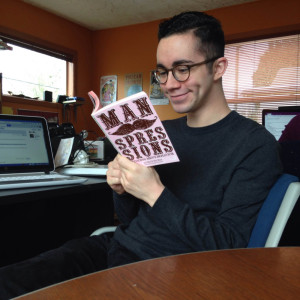
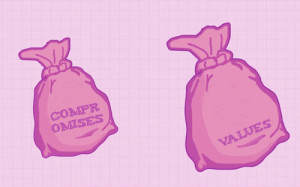 I work twelve-hours almost every day, including weekends. Almost every time that I explain how little I earn to the people who see how hard I work, they are puzzled. How do I make it work? Why would I make these “compromises?” What if something happens to me? What am I going to do for retirement?
I work twelve-hours almost every day, including weekends. Almost every time that I explain how little I earn to the people who see how hard I work, they are puzzled. How do I make it work? Why would I make these “compromises?” What if something happens to me? What am I going to do for retirement? 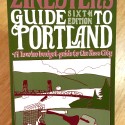
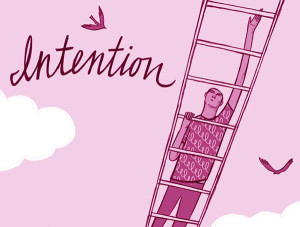
 We’re stoked to announce the official publication of
We’re stoked to announce the official publication of
 4. What’s your next project that you’re most excited about?
4. What’s your next project that you’re most excited about?